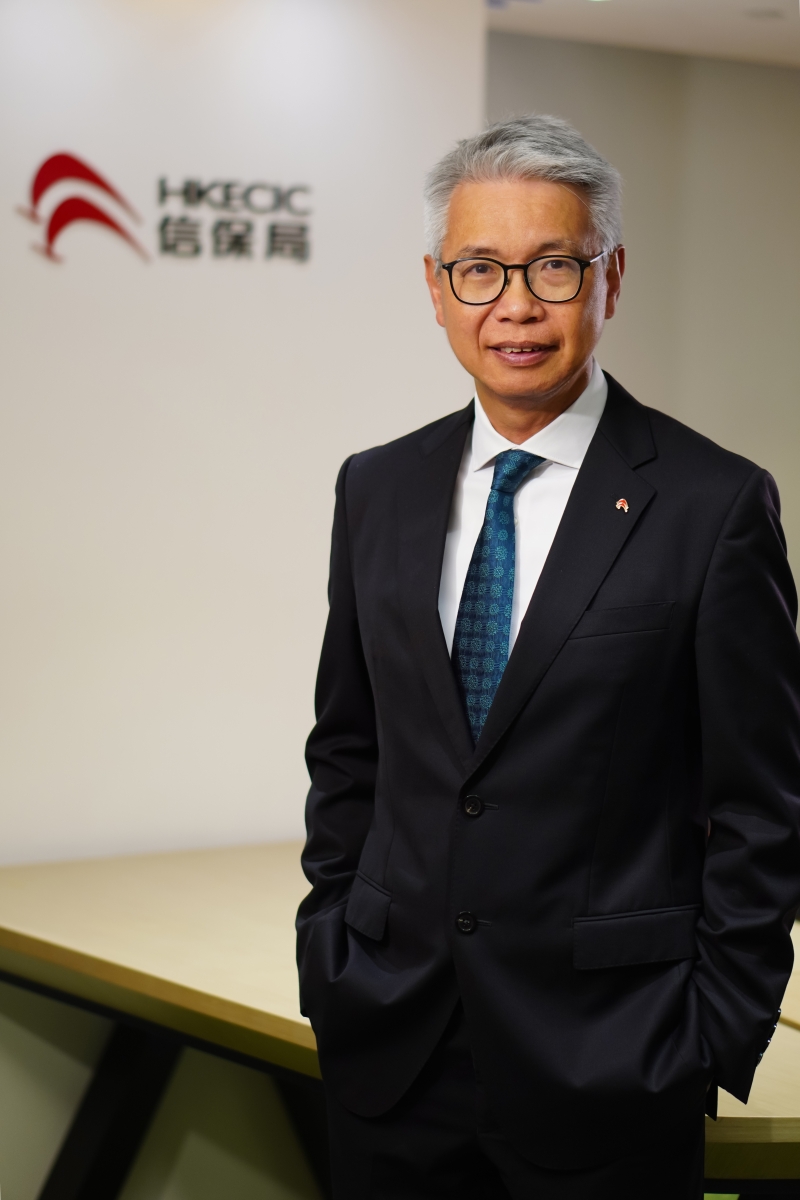
FundPark, HKECIC bare pioneering effort for insured growth for SMEs
Their partnership integrated data analytics and credit insurance to aid and protect small-scale business operations.
Perhaps, there is no better time for Hong Kong traders to insure their businesses against economic fluctuations and uncertainties.
Despite its small size, Hong Kong is a major player in global trade. In 2023, the World Trade Organisation (WTO) ranked it as the 10th largest trading entity in merchandise trade and 21st in commercial services, with a total merchandise trade amounting to HK$8.82t (US$1.13t). Its major trading partners include China, Southeast Asia, European Union states, and the US.
Yet, small-scale operations struggle to protect themselves, as traditional lenders often fail to meet their needs, creating a significant funding gap.
Recognising this, financial technology (fintech) platform FundPark has joined forces with the Hong Kong Export Credit Insurance Corporation (HKECIC) to offer a first-in-the-market solution that leverages advanced data analytics and credit insurance.
This collaboration specifically targets the financing landscape for small and medium enterprises (SMEs), particularly those engaged in cross-border trade. Since FundPark’s first structured asset-backed security in early 2022, it increased its loan distribution volume four times over.
“We’ve distributed over $2.6b in loans. About two-thirds of that total has occurred in the last 18 months alone. This growth trajectory highlights our status as a scale-up business, and we’re committed to sustaining this momentum in the short and medium term,” Hay Yip, chief strategy officer and chief of staff at FundPark, told Insurance Asia.

/Hay Yip, chief strategy officer and chief of staff at FundPark.
By providing financial support to SMEs, FundPark has advanced over $2.5b in facilities and secured $500m in asset-backed securities (ABS) financing led by Goldman Sachs, just last month.
The company also announced a $250-m partnership with HSBC to further support digital SMEs across Greater China, particularly in the Greater Bay Area (GBA). “Over our full lifetime, we’ve supported in excess of 17,000 shops,” Yip noted.
FundPark’s focus is not limited to domestic markets. The platform supports cross-border merchants, primarily those importing into Greater China or exporting from Greater China to the rest of the world. This global reach underscores the platform’s commitment to enabling SMEs to capture growth opportunities in diverse markets.
“They realised first-hand the challenges and difficulties of getting support from traditional lenders and banks for their working capital needs. This is very much front and centre in what we do at FundPark,” Yip said.
“We recognise that working capital is a huge constraint for SMEs. In fact, the vast majority of SMEs typically fail in the first three to five years because of challenges around managing cash flow and working capital. Hence, that’s a focus for us.”
The trade credit insurance market is projected to grow robustly, reaching $17.48b by 2028 with a CAGR of 9.3%. Asia Pacific, on the other hand, is expected to be the fastest-growing region. Factors driving this growth include global trade volatility, supply chain resilience, digitalisation of trade finance, the emergence of new market players, and strategic risk management post-pandemic.
With world trade reaching $28.5t in 2021, there’s a growing demand for trade credit insurance to protect receivables from credit risks in international transactions. Economic fluctuations and uncertainties, such as changes in GDP growth, stock market volatility, and exchange rate fluctuations, further underscore the importance of trade credit insurance in risk mitigation.
HKECIC’s role
The key role of the HKECIC is to aid exporters by insuring against non-payment or bankruptcy risks. Traditionally, the organisation has focused on providing export credit insurance to mitigate risks for exporters.
Its collaboration with FundPark marks a significant shift towards integrating FinTech solutions into its operations.
“HKECIC functioned as the ECA (export credit agency) in Hong Kong similar to ECAs in other countries. Over our 58-year history, we provided significant support to exporters ensuring their credit risk so that if buyers failed to pay or became insolvent, the export credit insurance kicked in and secured payment against the insurance coverage,” explained HKECIC Commissioner Terence Chiu to Insurance Asia in a joint interview with Yip.

/Terence Chiu, HKECIC Commissioner.
The collaboration with FundPark is pioneering in that it introduces the insurance industry into the cross-border e-commerce financing ecosystem. By combining FundPark’s advanced data analytics and credit assessment model with HKECIC’s insurance cover, the partnership aims to create a more sustainable and risk-mitigated financing environment for digital SMEs.
“FundPark had been operating for about eight years developing proprietary underwriting models and algorithms based on transactional and behavioural data to underwrite working capital loans for e-commerce merchants. This collaboration between FundPark and ECIC marked the first time the insurance industry is participating in this ecosystem,” Chiu added.
Leveraging alternative data for risk assessment
One of the key innovations in this partnership is the use of alternative data for underwriting. Traditional methods often rely on financial statements, which can be limiting for SMEs that may not have substantial financial histories.
Instead, FundPark and HKECIC use real-time transaction data to assess creditworthiness.
“That was an entirely different way of thinking about risk assessment. Traditionally, the industry relied heavily on the financial analysis of the borrower. To use an analogy, it’s like driving a car while only looking in the rear-view mirror — you’re basing predictions on past events,” Chiu explained.
This forward-looking approach allows for a more accurate assessment of a business's current and future potential, particularly for SMEs engaged in cross-border trade. The dynamic nature of this assessment is crucial in an industry characterised by rapid growth and cyclical sales patterns.
“Understanding these cycles and maintaining a real-time view of the merchant’s needs allowed us to stay close to their growth requirements,” Yip elaborated.
To further bolster this model, SCOR Reinsurance, a long-term partner of HKECIC, plays a role. Reinsurance helps mitigate risks and provides additional layers of security for credit insurance policies.
SCOR’s involvement not only provides financial stability but also enhances the credibility and robustness of the partnership's underwriting process. The combination of FundPark’s AI-driven model, HKECIC’s insurance cover, and SCOR’s reinsurance create a comprehensive and resilient framework for supporting digital SMEs.
Future prospects and key performance indicators
The partnership between FundPark and HKECIC is set to expand both in scope and depth. Plans are underway to explore additional markets and sectors, leveraging the strengths of both organisations to support a broader range of SMEs.
Success will be measured through key performance indicators such as model predictability regarding defaults and the ability to scale and adapt to new geographies and sectors.
“A key performance indicator for our collaboration will be maintaining a strong track record in model predictability regarding defaults,” Chiu noted. “This ensured our confidence and credibility. Additional support did not imply relaxing standards; we maintained our rigorous methodology, further mitigating risks. The benefits accrued to future funders, enhancing confidence in both algorithms and insurance policies, thereby attracting more participants to the market.”
Mirroring this, Yip reiterated the crucial aspect of assessing the underlying credit risk of borrowers accurately. “Our credit model was organic—it evolved, grew, and learned daily. We integrated modern tools like machine learning and AI into our approach, ensuring it remained dynamic. This, coupled with opportunities for scalability and growth, would be key performance indicators for us. Especially as we considered expanding into new geographies and possibly other sectors,” he told Insurance Asia.








![Cross Domain [Manu + SBR + ABF + ABR + FMCG + HBR + ]](https://cmg-qa.s3.ap-southeast-1.amazonaws.com/s3fs-public/styles/exclusive_featured_article/public/2025-01/earth-3537401_1920_4.jpg.webp?itok=WaRpTJwE)









 Advertise
Advertise


